Watch Out for Ryan, Not Trump
Contrary to conventional wisdom, the media fascination with the potential presidential campaign of the great American phony, Donald Trump, has been helpful to the Republican Party. The real player to watch is the boring chairman of the House Budget Committee, Paul Ryan.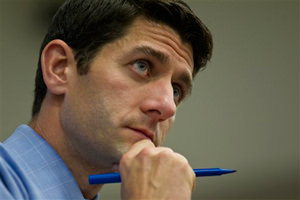
Contrary to conventional wisdom, the media fascination with the potential presidential campaign of the great American phony, Donald Trump, has been helpful to the Republican Party.
The conventional view is that his personality and rants about President Barack Obama’s birthplace have taken all the attention away from his potential rivals for the Republican presidential nomination, hurting their chances. I hope that’s true. But there has also been a big benefit to the Republicans: The Trump story—simple enough to absorb cable news and the Sunday morning shows—has sidelined media examination of something much more important. That would be the policies the Republicans have in store for the country if they win the presidency and the Senate and retain control of the House in 2012.
Rep. Paul Ryan of Wisconsin, the chairman of the House Budget Committee, spelled out the GOP’s intentions in a proposal that is a toxic blend of benefit reductions for the poor and middle class and tax cuts for the wealthy and corporate America. The House passed it earlier this month. Since it’s unlikely to become law in the near future—Obama and the Senate oppose it—the plan hasn’t been given the serious examination it deserves. After the articles about House passage, it has pretty much disappeared from the news, submerged by other, more sensational stories, such as those about Trump’s comments.
The Ryan plan proposes the end of Medicare and Medicaid and food stamps and the elimination of much of the rest of the safety net that has sustained the growing number of poor during the recession.
And it would increase the huge disparity between the incomes of the rich and the rest of the country — by lowering taxes on wealthy Americans and corporations.
An excellent analysis of how such a policy would further separate the affluent from everyone else is available in a 3,000-word article by David Cay Johnston, who won a Pulitzer Prize for his coverage of taxes while with The New York Times and now is a columnist for tax.com. His piece was commissioned by the Association of Alternative Newsweeklies and appeared in several publications around the country. Johnston didn’t write specifically of the Ryan plan, but he analyzed the implications of such policy proposals.
Johnston took on the tax myths upon which the Ryan plan is based. Among them: The poor don’t pay taxes and the rich carry most of the tax burden.
While the poorest don’t pay income taxes, Johnston wrote, “they still pay plenty of other taxes … federal payroll taxes [Medicare, Social Security, unemployment insurance] … gas taxes, sales taxes, utility taxes and other taxes” and “when it comes to state and local taxes, the poor bear a heavier burden than the rich in every state except Vermont. …”
“In fact,” he said, “the wealthy are paying less taxes.” He wrote that the 400 highest-income taxpayers pay 16.8 percent of their income in federal taxes, according to the Internal Revenue Service. “Adding payroll taxes barely nudges the number,” he said. “Compare that to the vast majority of Americans, whose share of their income going to federal taxes increased from 13.1 percent in 1961 to 22.5 percent in 2007.” An analysis by economists Thomas Piketty and Emmanuel Saez, Johnston noted, showed “the top 300,000 Americans now enjoy almost as much income as the bottom 150 million.”
Robert Greenstein, president of the Center on Budget and Policy Priorities, wrote specifically of the Ryan plan. He said it proposes cutting $4.3 trillion in federal spending over the next 10 years, taking about $2.9 trillion of it from “people of modest means.”
The plan, he said, “would produce the largest redistribution of income from the bottom to the top in modern U.S. history, while increasing poverty and inequality more than any measure in recent times and possibly in the nation’s history.”
Add to the Ryan plan what is happening in America’s statehouses, where Republicans in November made their biggest electoral gains since 1928. The result of those state elections, along with state budget deficits, is producing reductions in both social and education programs.
Progressives should take this threat seriously.
The temptation is to give up. I know the arguments for doing that: Obama has sold out; the system is so corrupt that nothing works; the banks, hedge funds and industry finance and control elections and policy, buying Democrats and Republicans; politicians are all clowns.
But we still have to fight, election by election, vote by vote.
A first step in doing that is to put the spotlight on the Republican proposals. That’s why David Cay Johnston’s piece on taxes was so valuable. He explained in considerable detail how the tax structure was widening the gulf between rich and poor. Read that article and you won’t want to give up. You’ll want to do something about it.
Donald Trump is a distraction. The real player to watch is the boring chairman of the House Budget Committee, Paul Ryan. Let’s focus on him.
Your support matters…Independent journalism is under threat and overshadowed by heavily funded mainstream media.
You can help level the playing field. Become a member.
Your tax-deductible contribution keeps us digging beneath the headlines to give you thought-provoking, investigative reporting and analysis that unearths what's really happening- without compromise.
Give today to support our courageous, independent journalists.
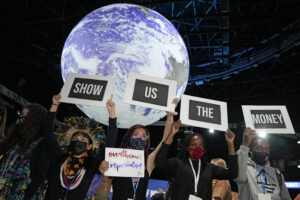
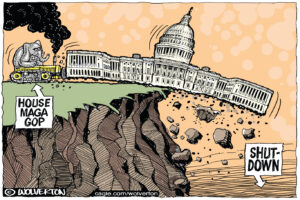

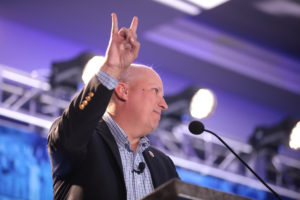
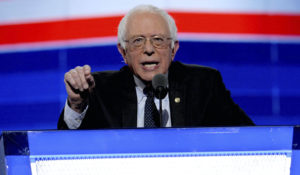

You need to be a supporter to comment.
There are currently no responses to this article.
Be the first to respond.